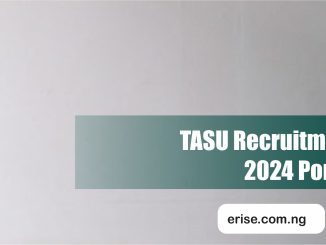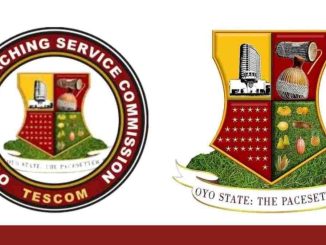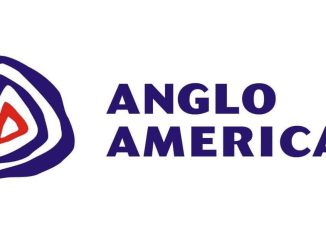
Every parent dreams of providing the best education for their child. In Nigeria, where the cost of quality education continues to rise, planning for your child’s future has become more important than ever. One of the most effective ways to ensure that your child gets the education they deserve is through a Child Education Savings Plan (CESP). This blog post will guide you through everything you need to know about these savings plans, how they work, their benefits, and how to choose the best one for your child’s future.
What is a Child Education Savings Plan?
A Child Education Savings Plan (CESP) is a financial product designed to help parents save and invest money over time for their child’s education. These plans offer a disciplined way to accumulate funds, often with added benefits like tax advantages, interest earnings, and sometimes even insurance coverage. Essential Guide to Car Insurance in Nigeria: What Every Driver Should Know
CESPs are particularly valuable in Nigeria, where the cost of education—from primary school to tertiary institutions—can be overwhelming. By starting a savings plan early, parents can alleviate the financial burden when it’s time for their child to pursue higher education.
Why You Need a Child Education Savings Plan in Nigeria
The importance of education in shaping a child’s future cannot be overstated. However, the financial commitment required to secure a quality education can be daunting. Here’s why you should consider a Child Education Savings Plan:
- Rising Cost of Education: With the cost of schooling continuously on the rise, starting a savings plan early can help you stay ahead of inflation and avoid taking out loans.
- Financial Discipline: CESPs enforce a structured savings regimen, ensuring that you consistently set aside money for your child’s future.
- Peace of Mind: Knowing that you have a financial plan in place for your child’s education provides peace of mind, allowing you to focus on other aspects of parenting.
- Flexibility: Many savings plans offer flexible payment options, allowing you to adjust your contributions based on your financial situation.
- Tax Benefits: Some education savings plans come with tax incentives, reducing the overall financial burden.

Types of Child Education Savings Plans in Nigeria
There are various types of savings plans available in Nigeria, each with its unique features and benefits. Here’s a breakdown of the most common ones:
1. Bank Savings Accounts
Bank savings accounts are the simplest form of saving for your child’s education. These accounts are easy to open and maintain, and they offer a safe place to store your money. However, they typically offer low-interest rates, which might not keep up with inflation.
2. Fixed Deposit Accounts
A fixed deposit account is a savings account where your money is locked in for a specific period, usually with a higher interest rate compared to regular savings accounts. This option is ideal for parents who want to ensure their savings grow over time without the temptation of withdrawing the funds prematurely.
3. Mutual Funds
Mutual funds pool money from multiple investors to invest in a diversified portfolio of stocks, bonds, or other securities. These funds can offer higher returns compared to traditional savings accounts. However, they come with risks, as the value of investments can fluctuate. It’s important to choose a mutual fund that aligns with your risk tolerance and financial goals.
4. Insurance-Based Education Savings Plans
Insurance companies in Nigeria offer education savings plans that combine savings with life insurance coverage. These plans guarantee that your child’s education will be funded even if something happens to you. They also often offer guaranteed returns or bonuses on your savings. Protect Your Investment with Auto Insurance in Nigeria
5. Education Trust Funds
An Education Trust Fund is a specialized savings plan where a trust is created to manage funds specifically for your child’s education. These funds are managed by trustees who ensure that the money is used solely for educational purposes. This option is ideal for parents who want to ensure their savings are safeguarded and used exclusively for education.
How to Choose the Best Child Education Savings Plan
Choosing the right savings plan for your child’s education can be challenging. Here are some factors to consider:
1. Understand Your Financial Situation
Before choosing a savings plan, evaluate your current financial situation. Consider your income, expenses, and how much you can realistically set aside each month. This will help you choose a plan that aligns with your financial capabilities.
2. Set Clear Goals
Define your education goals for your child. Are you saving for primary school, secondary school, or university education? Having clear goals will help you choose a plan with the right investment horizon and contribution requirements.
3. Consider the Interest Rates and Returns
Compare the interest rates and potential returns of different savings plans. While higher returns are desirable, it’s important to balance potential gains with the associated risks.
4. Review the Terms and Conditions
Carefully read the terms and conditions of each savings plan. Pay attention to any fees, penalties for early withdrawal, and the flexibility of contributions. Understanding these details will help you avoid surprises down the road.
5. Look for Additional Benefits
Some education savings plans offer additional benefits such as life insurance coverage, tax incentives, or bonuses on savings. Consider these extras when choosing a plan, as they can add significant value to your savings.
6. Consult a Financial Advisor
If you’re unsure about which plan to choose, consider consulting a financial advisor. They can provide personalized advice based on your financial situation and goals.

Steps to Start a Child Education Savings Plan in Nigeria
Starting a Child Education Savings Plan is a straightforward process, but it requires careful planning. Here’s how to get started:
1. Research and Compare Plans
Start by researching the different types of savings plans available in Nigeria. Compare their features, benefits, and potential returns to determine which plan best suits your needs.
2. Choose a Reputable Financial Institution
Select a reputable bank, insurance company, or financial institution that offers the savings plan you’re interested in. Look for institutions with a strong track record and positive customer reviews.
3. Open an Account
Once you’ve chosen a savings plan and a financial institution, you’ll need to open an account. This typically involves filling out an application form and providing necessary identification documents.
4. Set Up Regular Contributions
Determine how much you can contribute to the savings plan on a regular basis. Most plans allow you to set up automatic deductions from your bank account, making it easy to stay on track with your savings goals.
5. Monitor Your Savings
Regularly monitor your savings plan to ensure it’s growing as expected. Review your statements, track your progress, and make adjustments to your contributions if necessary.
6. Stay Committed
Consistency is key when it comes to saving for your child’s education. Stay committed to your plan, even when faced with financial challenges. Remember, the goal is to secure your child’s future.
Benefits of Child Education Savings Plans
Child Education Savings Plans offer numerous benefits for both parents and children. Here are some of the key advantages:
1. Financial Security
CESPs provide a sense of financial security, knowing that you’re actively planning for your child’s future. This peace of mind is invaluable, especially in a country like Nigeria where education costs can be unpredictable.
2. Structured Savings
These plans encourage disciplined savings habits. By committing to regular contributions, parents can accumulate a substantial amount of money over time, making it easier to afford quality education.
3. Potential for Growth
Depending on the type of savings plan, your money can grow over time through interest earnings, investment returns, or bonuses. This growth helps counter the effects of inflation and increases the value of your savings.
4. Protection Against Inflation
With education costs rising every year, CESPs help protect your savings from inflation. By investing in a plan with competitive returns, you can ensure that your savings maintain their purchasing power over time.
5. Flexibility in Contributions
Most savings plans offer flexible contribution options, allowing you to adjust your payments based on your financial situation. This flexibility makes it easier to maintain your savings plan even during tough times.
6. Tax Advantages
Some education savings plans come with tax benefits, such as tax deductions on contributions or tax-free withdrawals for educational expenses. These incentives can significantly reduce the overall cost of saving for education.
7. Peace of Mind for the Future
Knowing that you have a solid financial plan in place for your child’s education provides peace of mind. This allows you to focus on other aspects of parenting, confident that your child’s future is secure.

Challenges of Child Education Savings Plans in Nigeria
While Child Education Savings Plans offer many benefits, they also come with certain challenges. It’s important to be aware of these challenges so you can make informed decisions.
1. High Inflation Rates
Nigeria has a history of high inflation rates, which can erode the value of your savings over time. It’s essential to choose a savings plan that offers returns that outpace inflation to ensure your money retains its value.
2. Economic Uncertainty
The Nigerian economy can be unpredictable, with fluctuations in currency value and economic stability. These factors can impact the returns on your savings plan, making it crucial to diversify your investments.
3. Limited Access to Quality Financial Products
While there are several savings plans available in Nigeria, the range of high-quality financial products is limited compared to more developed markets. This limitation can make it challenging to find the best savings plan for your needs.
4. Lack of Financial Literacy
Many parents in Nigeria may lack the financial literacy needed to make informed decisions about Child Education Savings Plans. Without a clear understanding of how these plans work, parents may choose options that don’t fully meet their needs or fail to maximize the benefits of their savings.
5. Risk of Default or Fraud
While most financial institutions in Nigeria are regulated, there is always a risk of default or fraud, especially with lesser-known or unregulated entities. It’s essential to choose a reputable financial institution and ensure that your savings are protected under Nigeria’s financial regulations.
6. Early Withdrawal Penalties
Some Child Education Savings Plans come with penalties for early withdrawal. If you face an unexpected financial emergency and need to access your funds, these penalties could reduce the amount of money available to you. It’s important to understand the terms of your savings plan and have an emergency fund separate from your education savings.
How to Maximize the Benefits of a Child Education Savings Plan
To get the most out of a Child Education Savings Plan, consider the following tips:
1. Start Early
The earlier you start saving for your child’s education, the more time your money has to grow. Even small, regular contributions can accumulate significantly over time due to the power of compound interest.
2. Make Regular Contributions
Consistency is key. Set up automatic contributions to your savings plan to ensure that you’re regularly adding to your child’s education fund. This disciplined approach will help you stay on track and reach your savings goals.
3. Review and Adjust Your Plan
Periodically review your savings plan to ensure it’s still aligned with your financial goals and your child’s education needs. If your financial situation changes, or if you need to adjust your savings target, don’t hesitate to make changes to your plan.
4. Diversify Your Investments
If your Child Education Savings Plan includes investment options, consider diversifying your investments to reduce risk. A diversified portfolio can help protect your savings from market volatility and increase the potential for growth.
5. Take Advantage of Tax Benefits
If your savings plan offers tax advantages, make sure you understand how to maximize these benefits. For example, you might be eligible for tax deductions on your contributions or tax-free withdrawals for educational expenses.
6. Educate Yourself
Take the time to educate yourself about different savings plans, investment options, and financial strategies. The more you know, the better equipped you’ll be to make informed decisions that benefit your child’s future.
Common Mistakes to Avoid
When setting up a Child Education Savings Plan, avoid these common mistakes to ensure you’re on the right path:
1. Procrastination
Delaying the start of your savings plan can have a significant impact on your ability to reach your savings goals. The longer you wait, the more you’ll need to save each month to meet your target. Start as early as possible to take advantage of compound interest.
2. Choosing the Wrong Plan
Not all savings plans are created equal. Take the time to research and compare different plans to find the one that best fits your needs. Choosing a plan based solely on high returns without considering the associated risks can lead to disappointment.
3. Ignoring Inflation
Failing to account for inflation when planning your savings can result in a shortfall when it’s time to pay for your child’s education. Make sure your savings plan includes a strategy to protect against inflation, such as investing in higher-yield options.
4. Withdrawing Funds Early
Unless absolutely necessary, avoid withdrawing funds from your Child Education Savings Plan before your child is ready to use them for education. Early withdrawals can result in penalties and reduce the amount of money available for education.
5. Not Reviewing Your Plan Regularly
Your financial situation and your child’s educational needs may change over time. Failing to review and adjust your savings plan regularly can result in your plan becoming outdated or insufficient to meet your goals.

Real-Life Success Stories
Hearing from parents who have successfully used Child Education Savings Plans can be inspiring and provide valuable insights. Here are a few examples:
1. Adeola’s Story: Planning Ahead for a Dream University
Adeola started saving for her son’s education as soon as he was born. She chose a mutual fund-based Child Education Savings Plan that offered higher returns. Over 18 years, her disciplined savings and the plan’s growth allowed her to accumulate enough money to send her son to a prestigious university abroad. Adeola credits her success to starting early, regular contributions, and choosing a plan with strong growth potential.
2. Chioma’s Story: Overcoming Financial Challenges
Chioma faced significant financial challenges after losing her job. Despite this, she remained committed to her daughter’s education savings plan. By adjusting her contributions and seeking advice from a financial advisor, she was able to keep the plan on track. Today, her daughter is attending a top secondary school, fully funded by the savings plan Chioma worked so hard to maintain.
3. Bello’s Story: The Importance of Diversification
Bello initially invested all his savings in a fixed deposit account but later realized that the returns were not keeping up with inflation. He consulted a financial advisor and diversified his investments into a combination of mutual funds and an insurance-based education plan. This strategy allowed him to grow his savings more effectively, ensuring that his children have the financial resources they need for their education. Truth you need to know about car insurance in Nigeria

Frequently Asked Questions (FAQs)
Q1: What is the best time to start a Child Education Savings Plan?
A: The best time to start a Child Education Savings Plan is as early as possible, ideally when your child is born. The earlier you start, the more time your savings have to grow, and the less you’ll need to contribute each month to reach your goal.
Q2: Can I use the savings from a Child Education Savings Plan for non-educational purposes?
A: While it’s technically possible to withdraw funds from some savings plans for non-educational purposes, it’s generally not recommended. Early or non-educational withdrawals may incur penalties and reduce the amount of money available for your child’s education.
Q3: What happens to the savings if my child decides not to pursue higher education?
A: If your child decides not to pursue higher education, you have several options depending on the type of savings plan. You can transfer the funds to another child, use the money for other educational purposes, or withdraw the funds, although some plans may impose penalties or restrictions.
Q4: How do I choose between different types of Child Education Savings Plans?
A: Choosing the right plan depends on your financial situation, risk tolerance, and education goals. Consider factors such as interest rates, potential returns, fees, and additional benefits. Consulting a financial advisor can also help you make an informed decision.
Q5: Are there any government-backed Child Education Savings Plans in Nigeria?
A: As of now, there are no specific government-backed Child Education Savings Plans in Nigeria. However, many private financial institutions offer plans that are regulated by the Central Bank of Nigeria and other relevant authorities.
Q6: Can I open a Child Education Savings Plan for a child who is not my own?
A: Yes, in many cases, you can open a Child Education Savings Plan for a child who is not your own, such as a grandchild, niece, nephew, or godchild. The specific requirements may vary depending on the financial institution and the type of plan.
Q7: How much should I aim to save in a Child Education Savings Plan?
A: The amount you should aim to save depends on the cost of the education you envision for your child, the time frame, and your financial capacity. It’s a good idea to calculate the estimated future cost of education and set a savings target based on that.
Q8: What if I can’t keep up with the regular contributions?
A: If you’re struggling to keep up with contributions, consider adjusting your savings plan to lower your monthly payments. Some plans offer flexibility, allowing you to pause or reduce contributions without penalties. It’s important to communicate with your financial institution to explore your options.
Q9: Can I change the beneficiary of the Child Education Savings Plan?
A: Depending on the plan, you may be able to change the beneficiary to another child or family member. It’s important to check the terms and conditions of your plan to understand the process and any potential implications.
Q10: What are the risks associated with Child Education Savings Plans?
A: Risks vary depending on the type of savings plan. For example, mutual funds carry market risks, while fixed deposit accounts may not keep up with inflation. It’s important to understand the risks associated with each type of plan and choose one that aligns with your risk tolerance and financial goals.
Conclusion
A Child Education Savings Plan is a powerful tool for securing your child’s future. By starting early, choosing the right plan, and staying committed to regular contributions, you can ensure that your child has the financial resources needed to pursue their educational dreams. While there are challenges, such as inflation and economic uncertainty, careful planning and informed decision-making can help you overcome these obstacles. Remember, the key to success lies in consistency, education, and the willingness to adapt your plan as needed. With the right approach, you can give your child the gift of education and set them on a path to success.




Be the first to comment